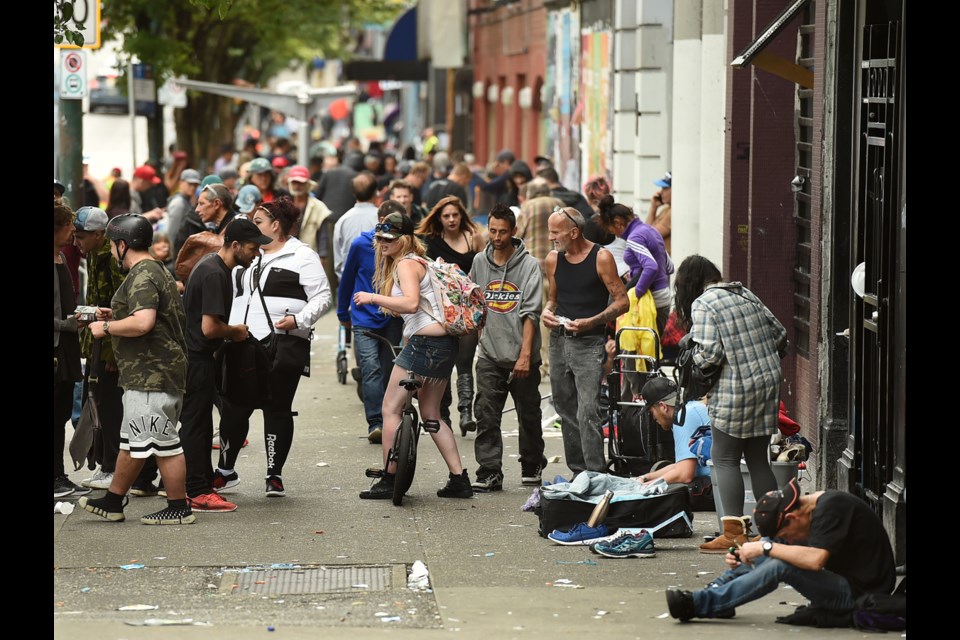Frank Baumgarten stands in front of the provincial court house near Main and Powell streets, map in hand.
He’s flanked by his wife and two young kids when the Courier approaches.
The family of German tourists are in a hurry. They’ve just walked north along Main Street, up from Chinatown. They agree to speak, but for only five minutes.
They want out of the area and fast.
“I was here 20 years ago and it’s now very different,” Baumgarten says. “The people on the street. What happened?”
Within two minutes, a pair of Vancouver fire department trucks pass by with sirens sounding. They’re the medic trucks that respond to overdose calls. Four men directly across the street are openly using drugs.
Baumgarten is asked if he feels comfortable having his kids in the area.
“Absolutely not.”
Baumgarten’s wife offers this:
“[My son] is scared because he saw a needle, and he’s afraid to step on one,” she said.
Rare, if ever, is the case of someone stepping on a needle and contracting disease. Baumgarten’s son doesn’t know that. He’s 10 and quickly wants to move on towards Gastown.
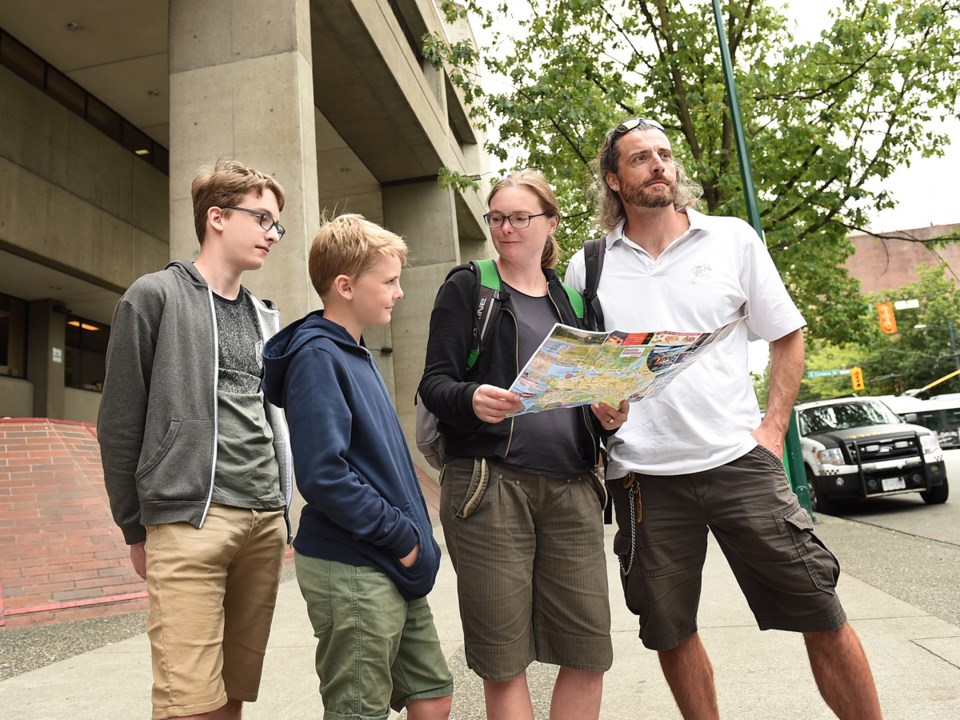
Scenes like this play out repeatedly, and in varying degrees, on an August morning in the area where Gastown ends and Chinatown begins.
Australians Phill and Leonie Petrovic walk from the Gassy Jack statue east along Powell Street, having just arrived on a cruise ship three hours earlier. They get to Columbia Street and turn around.
“We made a decision about 100 metres back. We had a feeling that perhaps we were getting too far out of the tourist area,” Phill says. “So we’re crossing the road and heading back. We don’t need to see that, and we don’t want to put ourselves in a situation that might arise.”
The Courier spoke to 10 tourists in the span of a half hour and common themes came up time and again: safety was a concern, kids shouldn’t be exposed to widespread, open drug use and all big cities grapple with homelessness. Vancouver is no different in that regard, the tourists said, but the volume of open drug use and street disorder was jarring.
These encounters with tourists happen as the debate about Oppenheimer Park and the state of the Downtown Eastside intensifies.
On Monday morning, the park board issued an order requiring those camping in the park to vacate by 6 p.m. on Aug. 21. The Strathcona Business Improvement Association wants the tents gone and help given to those living in the park. Police officers won’t go near Oppenheimer unless in teams of four. The VPD said Aug. 19 that 21 violent incidents took place in and around the park in the last week alone. Businesses in Chinatown are closing. This year’s homeless count recorded the highest numbers ever. The VPD has said the Downtown Eastside is arguably the most difficult place to work in law enforcement in Canada.
All of this transpires at the height of a tourist season expected to bring 11 million visitors to Vancouver, along with a 20 per cent uptick in cruise ship passengers.
Tourism Vancouver says each cruise ship brings in $3 million in economic activity, and tourism contributes about $5 billion to the Metro Vancouver economy annually.
Tourism Vancouver’s website contains little, if any, information about what awaits tourists once they leave Gastown and head east. The Port of Vancouver doesn’t tell incoming cruise ship passengers about the Downtown Eastside either.
Tourism Vancouver president Ty Speer says he’s open to that discussion, though he’s unsure if a tourism bureau should lead that messaging.
Two high-profile stories from July come up in conversation: the Danny Green incident and the escalating disorder near the Patricia Hotel. In a July 9 podcast, the former Toronto Raptor called East Hastings the “worst street in North America” in terms of open drug use. Meanwhile, hundreds of travel website reviews from visitors the world over decry the open drug use and lawlessness around the Patricia.
“I’m always very careful not to see the whole world as a function of one, two or three incidences,” Speer said. “They’re not good, we don’t want to see them. But in the whole scheme of things, we’ve got an enormous number of people saying positive things about tourism in Vancouver.”
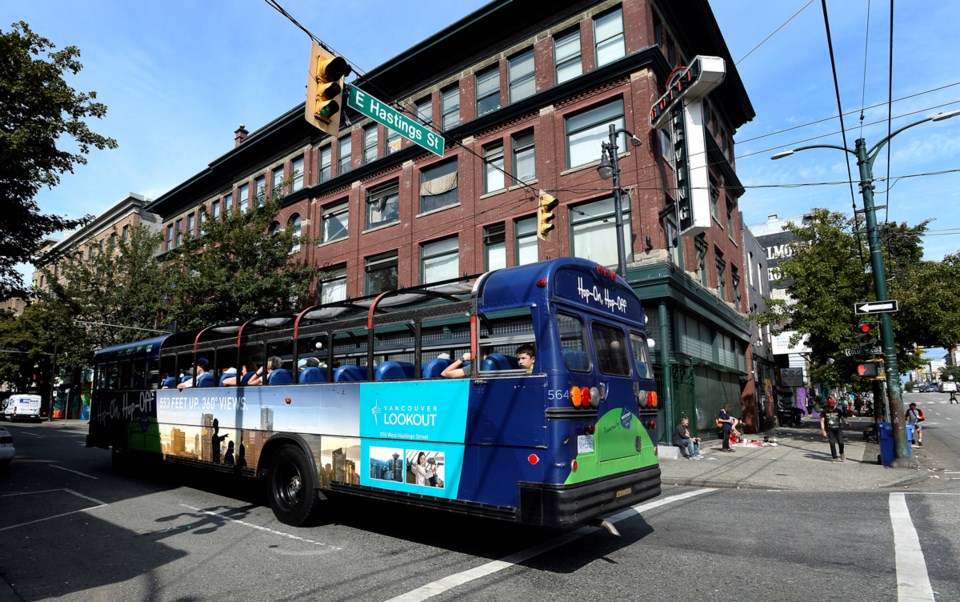
Sue Pastorcic and Tresa Nelson meet with the Courier at Keefer and Columbia streets, in front of the Chinatown Memorial Plaza. They’re part of a pilot program called the Chinatown Community Stewards, which is managed by EMBERS Eastside Works in partnership with the city and Chinatown community.
They’ve been on the job five weeks and are tasked with cleaning up needles, helping businesses deal with increased crime and connecting with tourists.
Pastorcic has picked up 20 needles in an hour outside the Dr. Sun Yat-Sen Chinese garden. Two open-top tour buses stop in front of the memorial and an aggressive woman appearing to be in a state of impairment hurls obscenities at the tourists.
“Those tourists didn’t do anything, they’re just trying to see the city,” Nelson said. “I feel really sorry for some of these cruise ship passengers who know nothing about [the conditions] down here.”
Both Nelson and Pastorcic are former drug users and now work in harm reduction. They’ve spent decades in the Downtown Eastside and won’t allow their kids or family members to visit the area.
A tour bus driver is approached directly outside of the Sun Yat-Sen building. He says tourists are “very surprised” with what they see in the area. He recommends that none of them get off the bus until it has left Chinatown.
While investigating how — or if — tourism is affected by the ongoing issues on the Downtown Eastside, the Courier heard from dozens of people who live, work and play in the area.
Four words came up in almost every interview conducted over the course of a six-week investigation: “it’s never been worse.”
Bad for business
Green Party Coun. Pete Fry has lived in Strathcona for about 30 years. He speaks to the Courier in late July, shortly after owners of the Patricia Hotel go public with their concerns about the neighbourhood.
“Businesses down there are suffering incredibly,” Fry said. “It’s not only the thefts and the street disorder, it’s also scaring business away. I’m getting daily reports from folks who are upset, stressed out. They’re wanting some kind of action.”
A Starbucks at Main and Keefer closed earlier this summer, and the company wouldn’t say why when asked by the Courier. Some have suggested the shop shut down due to an inability to retain staff willing to work in the area.
Three business improvement associations operate in or around the Downtown Eastside.
Numerous interview requests to the Chinatown BIA were not returned. The Strathcona BIA released a survey Aug. 13 suggesting 83 per cent of respondents wanted Oppenheimer Park returned to its original purpose — a green and social space. Businesses in the area have reported a loss of customers and an inability to retain staff due to safety concerns.
One business in the vicinity of the park noted “the number of violent incidents has spiked in the time since it has become a tent city” and “the number of times we have had to call 911 has risen beyond a point of reasonable expectation.”
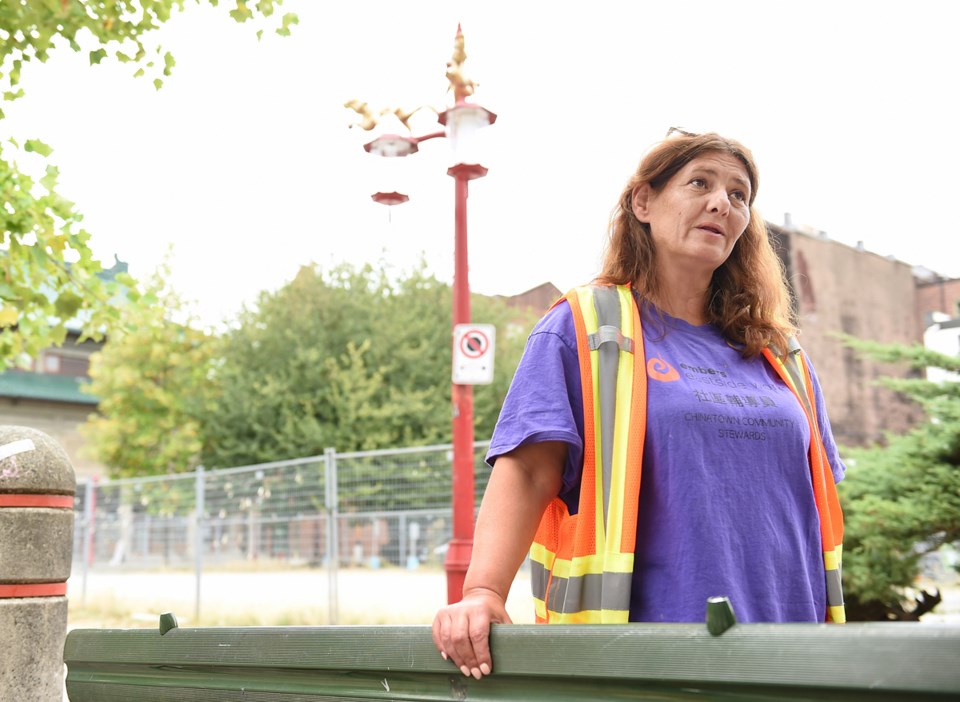
Hastings Crossing BIA executive director Brennan Fitzgerald said some of his members are reporting worsening business conditions as well.
“I’ve seen a spreadsheet from one of those property owners, and it’s very clear that the amount they’re spending on increased security and dealing with the results of that kind of activity — graffiti removal or cleaning — is going up,” he said.
Fry lists issue after issue affecting the area in a span of minutes — some he’s seen, others he’s heard about: a bike chop shop in Oppenheimer, a new gang operating in the park’s periphery, increased assaults and violence, theft and extortion from local businesses.
Somewhere inside the last two to three years, the area changed, he said. It’s the result of a “systemic failure” of all three levels of government. More housing and security for area residents and businesses is needed.
Some comments about a recent Courier story highlighting the problems around the Patricia Hotel suggest the owners shouldn’t have purchased in the neighbourhood 23 years ago — that what’s happening in the Downtown Eastside is normal.
“It’s an oversimplification to take that approach,” Fry said. “You can’t say this is normal if you don’t actually know what you’re talking about and live in the neighbourhood where you can walk the walk and talk the talk.”
Abelardo Mayoral-Fierros is a concert promoter who’s staged about 500 shows across the Downtown Eastside over the last decade: at the Rickshaw, Astoria and Pat’s Pub, along with numerous other venues that no longer exist.
Mayoral-Fierros brings bands to Vancouver from all across the world and is in the Downtown Eastside several times a week. He agrees with Fry’s timeline: two or three years ago, it was relatively safe and he’d tell bands the Granville strip was far more dangerous.
“Some of them say they don’t want to come back,” Mayoral-Fierros said. “I booked a band from Detroit who said the neighbourhood was apocalyptic. These are bands that tour the world and they tell you they’ve never seen anything worse.”
(Full disclosure: Courier reporter John Kurucz has and continues to perform at concerts booked by Mayoral-Fierros.)
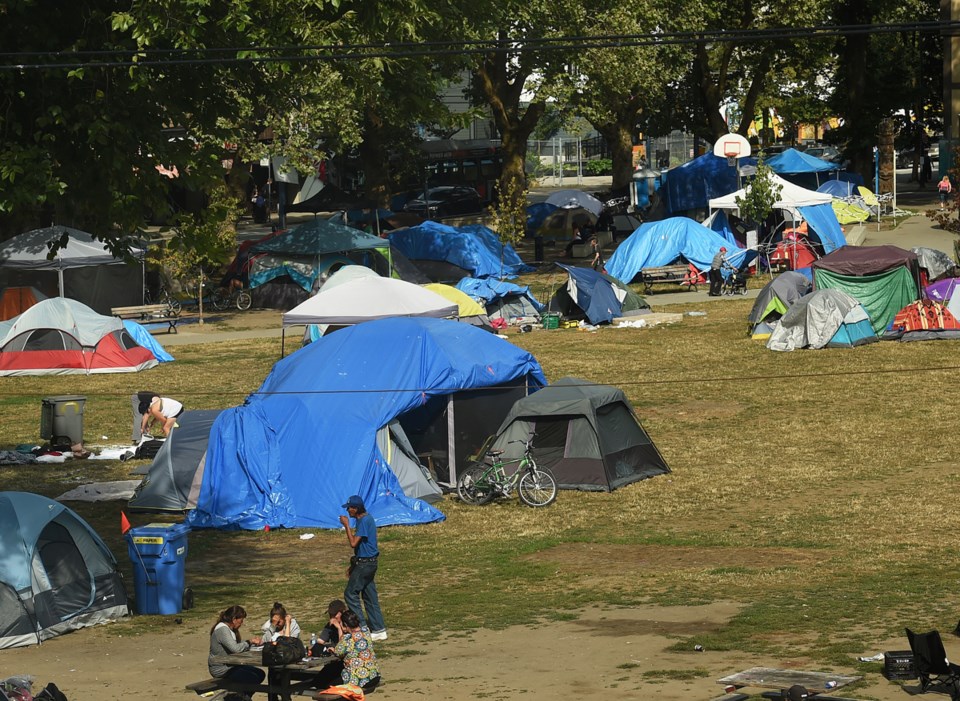
Mayor Kennedy Stewart and police chief Adam Palmer were asked about the state of the Downtown Eastside in mid-July, on the same day Patricia Hotel owners Daryl Nelson and Lindsay Thomas appealed to the police board for help.
Both said more housing is needed and that tourists have little to worry about if they travel to Main and Hastings. Stewart said he’d be going to a gig at the Rickshaw that weekend, but not before stopping for food at Dixie’s.
The popular barbecue joint at Main and Hastings was in the midst of shutting down its storefront operations when Stewart made those comments and the closure was attributed to a lack of foot traffic in the area. Palmer described it as a “challenging neighbourhood.”
“There’s lots of stuff going on there and [Nelson’s] observations I would say are correct — challenging neighbourhood, with mental health, addiction issues, homelessness. We recognize that, as all Vancouverites do,” he said.
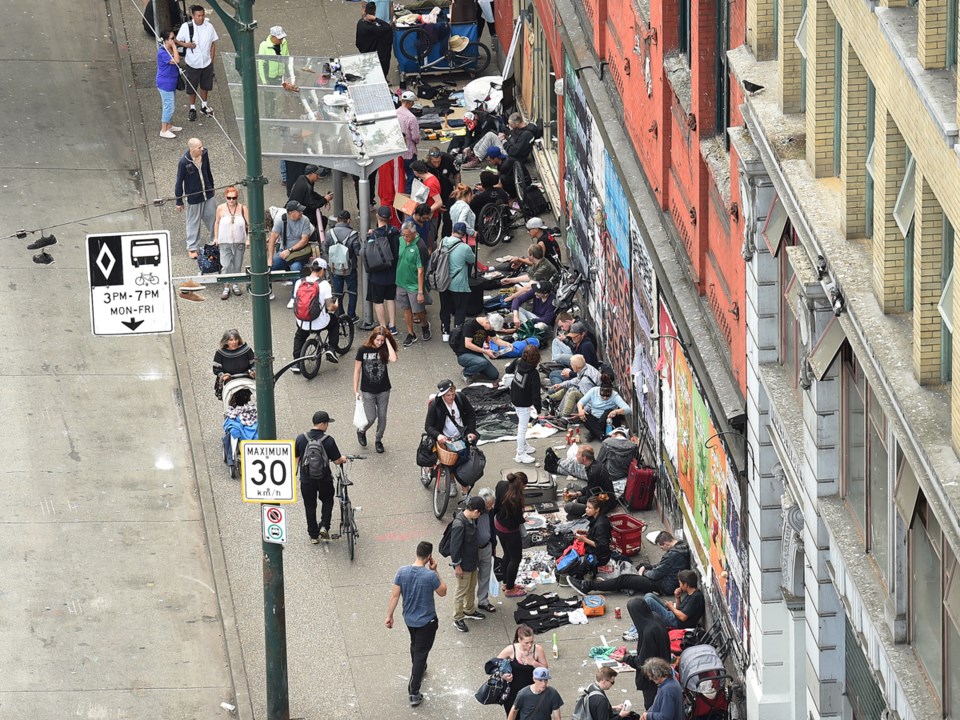
By the numbers
- Vancouver police statistics for June show Strathcona had 70 assaults, 106 thefts from vehicles, 11 robberies and 31 break-ins to residences and businesses. In June alone, police responded to 92 emergency calls in Oppenheimer Park. There were 87 calls in May.
- For all of 2018, there were 666 assaults, 799 thefts from vehicles and 68 robberies in Strathcona. The same stats are far worse in the Central Business District, the area bound by Burrard and Main streets, stretching north to Coal Harbour and including the Granville Entertainment District. In that neighbourhood there were 1,590 assaults, 5,223 thefts from vehicles and 208 robberies.
- A total of 2,223 people in Vancouver were counted as homeless in March — a new record — compared to 2,181 people last year. That number was 1,746 in 2015 and 1,364 in 2005.
- More than 1,000 people didn’t participate in this year’s survey questions about drug use.
- Of the 1,156 people who did, 33 per cent said they had an addiction to opioids. Another 29 per cent had an addiction to methamphetamines, 22 per cent to alcohol, 21 per cent to marijuana and 14 per cent to cocaine.
- Almost half of respondents cited a mental health issue.
- Overdose deaths are decreasing this year, with 144 reported as of June 30 compared to 195 during the same timeframe in 2018.
- Vancouver Coastal Health had the highest rate of overdose deaths in the province in 2017 and 2018. There were 439 deaths reported in the Vancouver Coastal Health region by the end of December 2018, the highest ever.
- More than $2 million was spent on trying to revitalize and redevelop Oppenheimer Park in 2009.
- A Vancouver Sun report from 2014 suggested more than $360 million in annual funding was going into the DTES — roughly $1 million per day. Of that money, $265 million came from all three levels of government. The same report suggested there were close to 300 agencies operating in the neighbourhood at that time.
- By mid-2015, provincial rates of illicit drug deaths surpassed those seen in 1997 and 1998 when a public health emergency in the Downtown Eastside was declared in response to an epidemic in HIV infection rates and illicit drug fatalities.
- In April 2016, B.C.’s provincial health officer declared a public health emergency in response to the rise in drug overdoses and deaths.
- Overall life expectancy in the Downtown Eastside dropped sharply from 2013-15 to 2016-17 from 77.39 years to 75.02 years. The discrepancy in life expectancy between men who live in the Downtown Eastside and those who live in Vancouver’s West Side in 2016-17 was nearly 15 years.
What’s being done, what has been done
In April, B.C.’s provincial officer of health Dr. Bonnie Henry called for the immediate decriminalization of people who use drugs in B.C., a stance echoed in August by the Nurses and Nurse Practitioners of British Columbia and the Harm Reduction Nurses Association.
Vancouver Coastal Health chief medical health officer Dr. Patricia Daly delivered her annual report in late July, as tourist season neared its apex.
Daly’s report makes 21 recommendations, including a regulated, legal supply of drugs, which she said is the single-most urgent of her recommendations; improving access to opioid agonist treatment; expanding programs that help prevent problematic substance use and, strengthening the system of care for people with substance use disorder.
To the latter point, Daly said:
“People with addictions and their families must navigate a complex and fragmented system of care that includes programs that may not make use of evidence-based treatment or employ best practices,” Daly wrote. “It is not currently possible to evaluate the system overall or its components, which can include outpatient or inpatient treatment, withdrawal management services and residential recovery.”
Sources who spoke to the Courier for this story suggest that many DTES services operate in silos and in isolation, largely over political affiliations.
“Thanks to neoliberalism, we see housing providers that are in competition,” Fry said. “It’s no secret that some housing providers have better relationships with certain governments: NDP, Liberal, Vision. There are preferred alignments, but the nature of bureaucratic systems has led to this.”
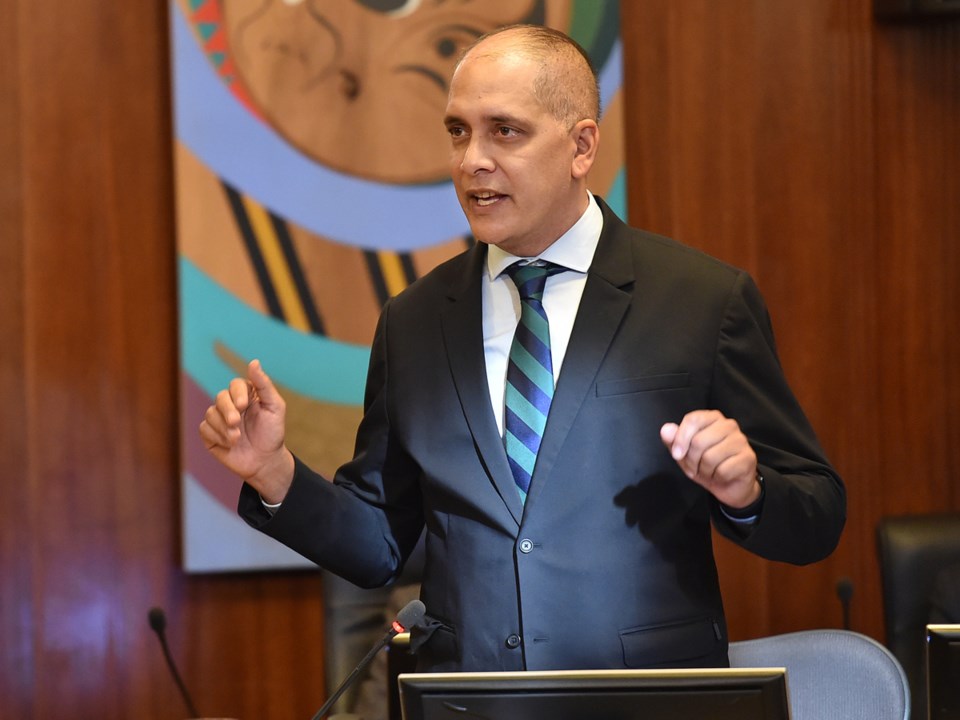
On the housing front, 10 temporary modular housing buildings have opened in Vancouver between March 2018 and June 2019.
The total number of modular housing units built under a program funded by the provincial government sat at 606 as of mid-June. City staff said 503 of the tenants who moved in were previously homeless.
The mayor, police chief and Fry have said housing is the primary tool to address many issues facing the DTES, and Vancouver East MP Jenny Kwan agrees. The four of them believe now is time to revisit the Vancouver Agreement.
Vancouver Agreement 2.0
The Vancouver Agreement was struck in 2000 between the city, province and federal government. It was meant to “support local community solutions to economic, social, health and safety issues,” and the DTES was to be the first area of priority. About $30 million was invested into the plan.
The VPD created a beat enforcement team, conducted ticketing blitzes and ran project after project to stem the flow of drugs. Conditions in some single-room-occupancy hotels improved, while other hotels were shut down entirely. Some hotels remained, and the living conditions worsened. HIV rates in the Vancouver Coastal Health region dropped by more than 50 per cent between 2011 and 2019.
The agreement was to be re-examined in five-year intervals, and Stephen Harper’s Conservative government allowed the partnership to end in 2010.
A provincial MLA at the time, Kwan was a signatory on the agreement. She’s asked what the agreement accomplished, given the perpetual reports of lawlessness and open drug use in the years since.
Kwan lists the opening of the supervised injection site Insite in 2003, coordination in resource delivery and the adoption of the four pillars drug strategy: harm reduction, prevention, treatment and enforcement.
Despite those changes, Kwan said many problems remain.
“I’ve never seen our community so challenged as they are today on the issue around homelessness, around supports for our community,” Kwan said.
As for the current state of the area, Kwan places blame almost exclusively on both current and past federal Liberal housing policies. She says B.C. has missed out on 1,700 new affordable housing units since the National Affordable Housing Program was cancelled in 1993.
In 1998, Kwan’s NDP government closed Riverview Hospital. The hospital formerly housed the mentally ill and those living with drug addictions. Many of those displaced patients ended up on the Downtown Eastside.
In late 2017, Prime Minister Justin Trudeau’s government announced a $40-billion, 10-year national housing strategy that aims to reduce chronic homelessness by 50 per cent in Canada. Kwan says little, if any of that money, has made its way into her community. Zoning changes, finding operators and getting non-profits on board could delay the completion of that housing stock until 2030.
Kwan is asked what she’d tell a tourist going into the Downtown Eastside.
“I go to Main and Hastings quite regularly. All the time. And, of course, we have challenges. We do. I’m not going to deny that we have challenges, but nor am I going to tell people, ‘Don’t go into our community.’ I would never do that,” Kwan responded.
Two decades in the DTES
Michael Leland has lived in the Downtown Eastside for more than 20 years, making ends meet by binning — he makes about $15 a day — and through disability payments. He lives in a Vancouver Native Housing Society building and pays $375 for rent each month.
Leland, 60, speaks to the Courier for more than an hour near Main and Cordova streets. He speaks to changes he’s seen in the area, his interactions with tourists and the ever-increasing tension over Oppenheimer Park.
The park is a lightning rod for Leland, and he suggests, few if any, of the campers are longtime Vancouverites. Instead, Leland, Nelson and Pastorcic all insist Vancouver is a destination for homeless people from across Canada.
“Everybody’s got a sh***y end of town. We are the sh***y end of town. Us guys down here, we know it’s a sh***y end of town,” Leland said. “If you’ve got to be poor, East Van is the easiest place to be poor. You get three, four meals a day for nothing. That’s what attracts people to Oppenheimer Park.”
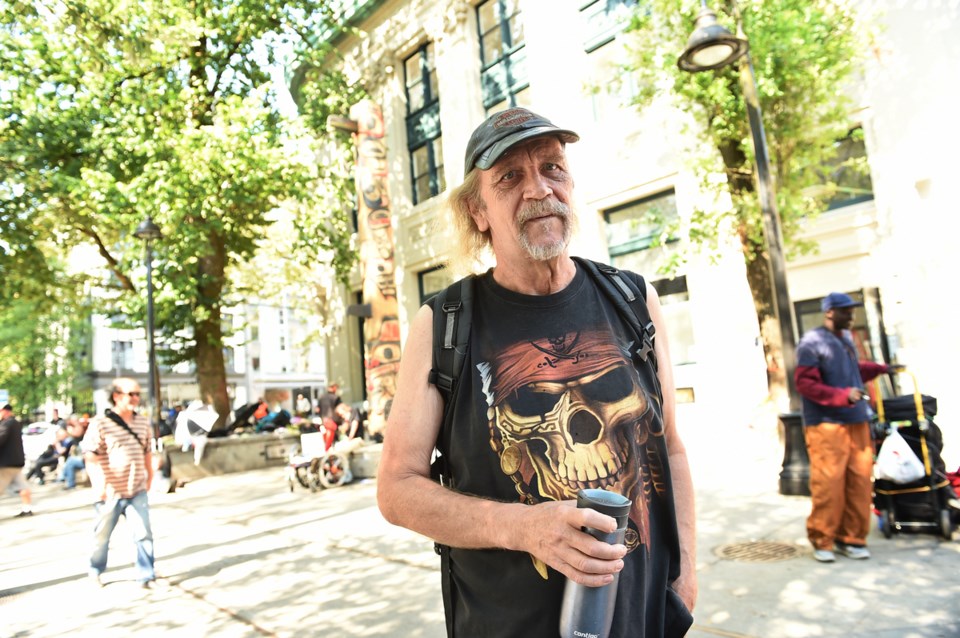
Leland admits that he’s no angel. He’s suffered numerous health setbacks, including a massive heart attack recently that’s left his heart operating at 30 per cent capacity. He was a “raging alcoholic” for decades before cutting back substantially nine years ago. Leland concedes he’s not long for this world and will die in the DTES.
“Yes, my days are numbered,” he said.
The former commercial fisherman remembers the “problematic area” stretching from Cambie to Main streets upon his arrival in the late 1990s. Now he suggests that area stretches from Victory Square to Clark Drive, if not Nanaimo Street.
Leland estimates he’s led more than 40 tourists out of the area near Pigeon Park back into Gastown this summer alone. Leland said his sympathy for the homeless is endless, but his patience wears thin on the issue of open drug use.
“The most important thing people don’t realize is that the people who live down here consider it our community. People overlook that. They don’t realize there’s a core group of people down here who live a normal life. Yes, we have our problems or we wouldn’t be down here,” Leland said. “But something has to be done. It’s got to be dealt with. Not maybe. Not ‘We’ll think about it.’ Do something about it. This is not normal. You don’t have needles in front of every doorway and consider that normal.”
@JohnKurucz
— with files from Mike Howell and Jessica Kerr
